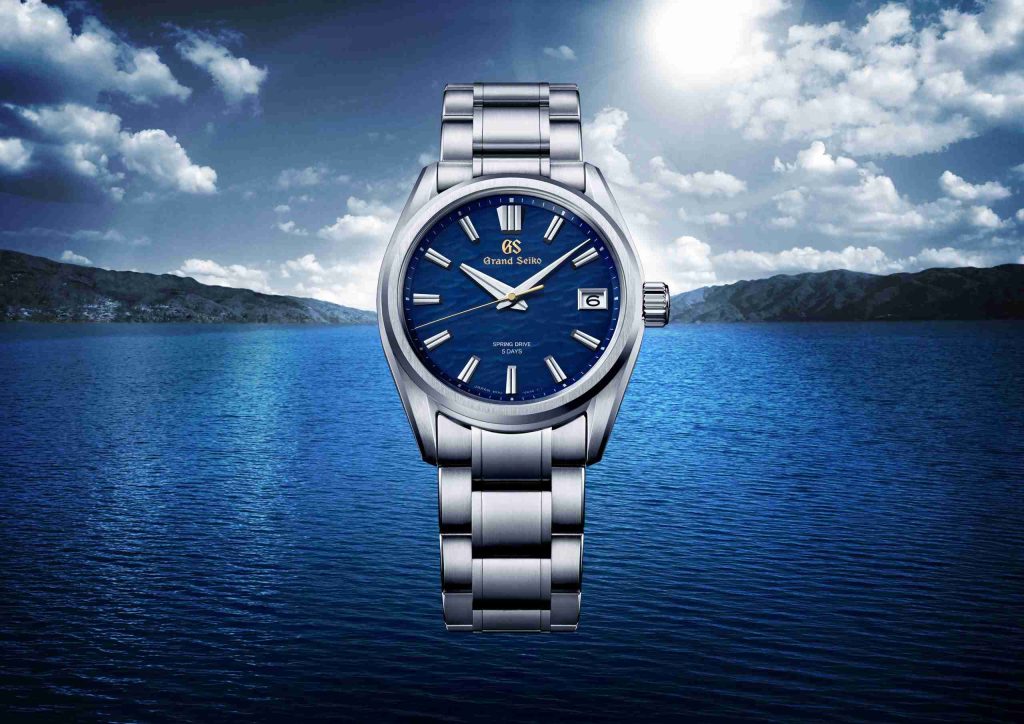When the Grand Seiko 9SA5 movement was unveiled, it didn’t merely impress—it shook the pillars of Swiss dominance in high horology. Watchmakers, collectors, and movement engineers alike now refer to this caliber as one of the most refined mechanical movements of the 21st century. But why? What elevates the 9SA5 from just another in-house caliber to what some now revere as the “perfect movement”? The answer lies in an obsession with mechanical purity, invisible details visible only under a microscope, real-world accuracy that outpaces certification norms, and service intervals that challenge even Rolex and Omega’s reputations for longevity.
Microscope Examination of the 9SA5 Caliber
At first glance, the 9SA5 might appear like many other premium movements: high-beat (36,000 vph), 80-hour power reserve, dual barrel. But zoom in under magnification and it becomes immediately clear that this is not just a technical upgrade—it is an aesthetic and architectural reimagination of what a modern movement can be.
The dual-impulse escapement, unique to Grand Seiko, is perhaps the most radical component. Unlike the traditional Swiss lever escapement, Grand Seiko’s patented design allows the escape wheel to directly transmit energy to the balance in both directions, reducing friction and increasing efficiency. Under a microscope, the geometry of the impulse jewels is unlike anything else in production—minutely angled to a degree that can only be machined with ultra-high-precision laser-guided equipment developed by Seiko’s internal Mechatronics division.
The free-sprung balance and overcoil, both firsts for Grand Seiko, are further examples of why this movement matters. The overcoil is hand-shaped and tested at a sub-micron level, and its curve shows a perfect concentric breathing motion when viewed through a high-resolution loupe. There’s no regulator—fine-tuning is done via variable inertia weights on the balance, bringing the architecture closer to Patek and Audemars Piguet territory.
Then there’s the finishing. Every bevel is polished using Grand Seiko’s proprietary Zaratsu technique, creating distortion-free mirror surfaces. The bridges are finished with striping that, while reminiscent of Geneva stripes, are executed with microscopic uniformity that holds even under 40x magnification. The chatons are gold-filled, not merely painted, and screw threads are mirror-polished internally—a detail that’s unnecessary for function but revered among finishing connoisseurs.

Real-World Accuracy Exceeding Certification Standards
Officially, the 9SA5 movement is adjusted to a mean daily rate of +5 to -3 seconds, which matches the COSC standard. But in user-owned watches across Japan, Europe, and North America, collectors have reported real-world deviations as low as ±1 second per day—without the need for quartz correction.
One Grand Seiko owner in Berlin reported +0.2s/day over six weeks, wearing the SLGH003 with the 9SA5 movement daily. Another, based in Singapore’s humid climate, tracked a deviation of only -1 second per week over a 3-month period using a timegrapher and multiple atomic sync references. These aren’t isolated anecdotes; they form a pattern that suggests Grand Seiko’s claimed figures are conservative.
The performance advantage comes down to two things: the stability of the dual-impulse escapement and the precision mass balancing of the free-sprung balance. Unlike regulated movements that can drift more dramatically with position and temperature, the 9SA5 maintains its beat rate through thermal variation due to both materials and architecture. Grand Seiko utilizes proprietary SPRON alloys for the hairspring and mainsprings, designed for both high elasticity and low thermal expansion.
Another unsung hero of the movement is the horizontal gear train layout. This design reduces vertical torque loss and allows better energy transfer over long durations. Most high-beat movements suffer a drop in amplitude after 24 hours; the 9SA5 maintains amplitude well above 270 degrees even into the 60th hour of its 80-hour reserve.
Maintenance Intervals That Challenge Industry Norms
Mechanical watches, no matter how well built, eventually need servicing. Traditional Swiss high-beat calibers often require maintenance every 3 to 5 years due to increased wear on the escapement and gear train. Grand Seiko’s 9SA5, however, is rated for 10 years between full overhauls—twice the industry standard for a movement oscillating at 36,000 vph.
How is this possible? Partly due to the low-friction materials used in the escapement and train. Grand Seiko’s Micro Electro Mechanical Systems (MEMS) technology allows for components to be created with nanometer-level surface smoothness, reducing wear dramatically. In addition, the escapement design disperses energy across more contact points, preventing the typical stress concentration that plagues lever escapements at high beat rates.
Furthermore, Grand Seiko has embedded an oil reservoir design in the escapement anchor, releasing lubricant more slowly and steadily over the life of the watch. Watchmakers servicing the 9SA5 have noted that, even after three years of daily wear, the oiling points remain well within spec, and teeth wear on the intermediate wheels is virtually nonexistent.
Another key contributor is the twin barrel design, which operates in series. This architecture not only boosts power reserve but also ensures smoother torque delivery. Traditional single-barrel movements experience a steep torque drop as the spring unwinds, but the 9SA5 maintains stable power due to intelligent gearing that manages output over time.
Lastly, all components of the 9SA5 are modular. Unlike older Seiko calibers that had integrated bridges and hard-soldered parts, the 9SA5 was designed for long-term serviceability. Bridges, wheels, and escapement components can be replaced individually, meaning owners can keep their watch in factory spec even after decades of wear.
Why the 9SA5 Movement Matters Beyond Japan
Grand Seiko has always occupied a strange space in the luxury market. Revered by collectors, overlooked by casual buyers, it has often lived in the shadow of Swiss giants like Rolex, Omega, and Patek Philippe. But with the 9SA5, Grand Seiko hasn’t just caught up—it may have leapt ahead.
There’s something deeply poetic about a movement that bridges Japanese minimalism and engineering obsession with the legacy of European haute horlogerie. It speaks not only to the global nature of modern watchmaking but also to a changing tide in what collectors value: not just brand, but proof of performance.
In an era where many luxury brands have prioritized volume over virtuosity, Grand Seiko’s 9SA5 reminds the industry what true innovation looks like. It’s not a gimmick. It’s not a gimmicked smartwatch hybrid. It’s a mechanical soul, beating at 36,000 vibrations per hour, built with an obsessive attention to detail that earns its “perfect” title from the most skeptical of horological experts.
It is the rare movement that satisfies every faction of the collector world—the aesthetes, the engineers, the historians, and the accuracy fanatics. Whether housed in a steel Evolution 9 or a gold Heritage case, the 9SA5 is more than just the engine of a watch. It’s the heart of a new era for Grand Seiko—and perhaps the next standard by which all mechanical movements are judged.





































